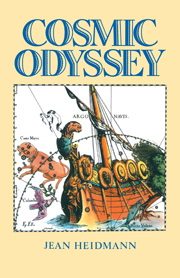4 - The relativistic universe
Published online by Cambridge University Press: 23 October 2009
Summary
Relativistic space
Four-dimensional spacetime
The twentieth century has given rise to two great theories in physics: relativity and the quantum theory. They gave mankind a radically different view of the nature of the universe. We have to use these ideas in order to understand more clearly the meaning of the quick look at the universe that we ran through in Chapter 3. Relativity particularly has provided a complete and coherent history of the universe from 0.01 seconds after the Big Bang right through to the present age of 15 billion years. When you see the majestic unfolding of this immensely rich tapestry for the first time it takes your breath away.
In seeking perfection we find that Einstein's general theory of relativity replaces Newton's law. In doing so, it replaces the Newtonian gravitational force with a completely different concept: gravitation results from the curvature of space created by masses located in space. This curvature guides the motion of particles, and makes them follow trajectories that correspond to the orbits of Newton's theory. This establishes the general framework for our investigation.
General relativity is a theory of gravitation which followed the results of the special theory of relativity. Some years earlier Einstein had completed the special theory, which is essentially a questioning and redefinition of the nature of space and time.
- Type
- Chapter
- Information
- Cosmic Odyssey , pp. 64 - 92Publisher: Cambridge University PressPrint publication year: 1989



